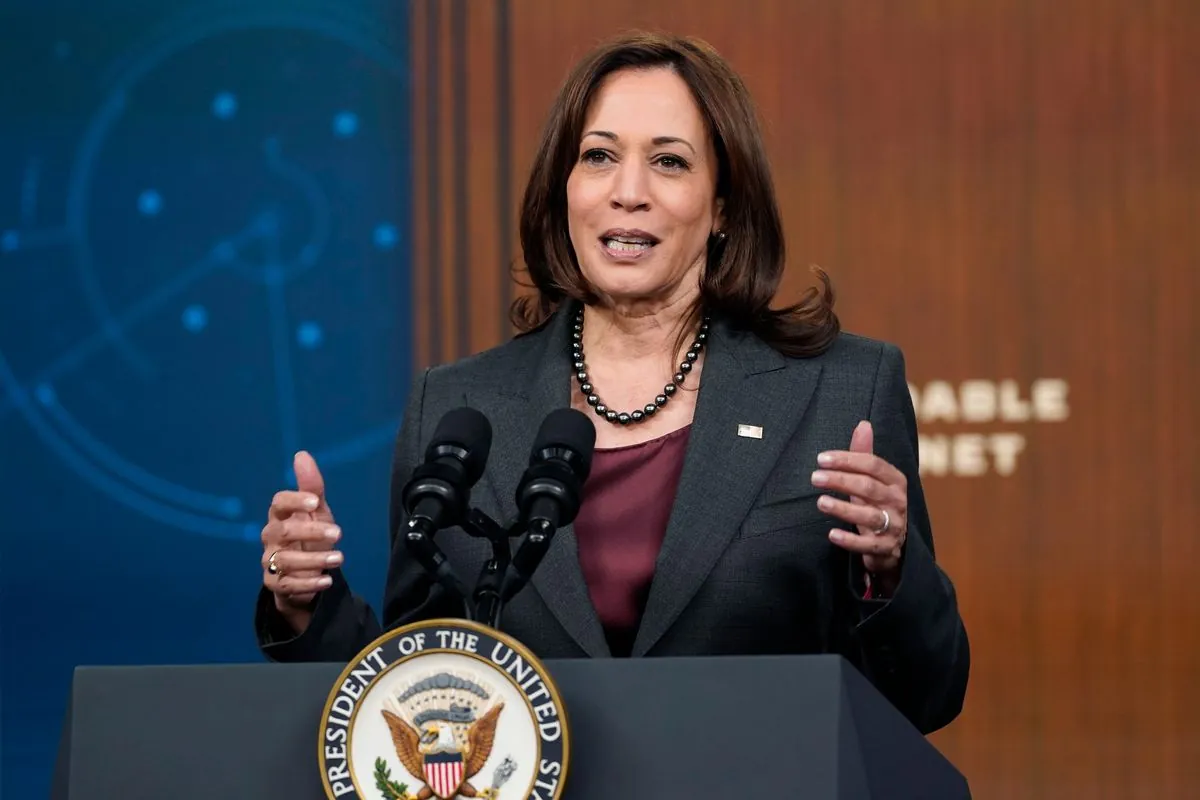Trump's Claim About Harris as 'Most Liberal Senator' Debunked
Analysis of Trump's recent attack on Kamala Harris reveals inaccuracies. Different metrics show varying ideological positions for Harris and Warren, highlighting the complexity of measuring political leanings.

Donald Trump's 2024 presidential campaign appears to be following a familiar pattern, recycling strategies and rhetoric from his previous runs in 2016 and 2020. His recent attack on Vice President Kamala Harris and Senator Elizabeth Warren exemplifies this approach, but a closer examination reveals significant inaccuracies in his claims.
Trump recently asserted on social media that Harris is "rated, by far, the Number One Most Liberal Senator." However, this statement does not align with available data and analyses.
The claim likely stems from a 2019 GovTrack analysis that ranked Harris as the most liberal senator based on bill sponsorship and co-sponsorship. However, GovTrack's assessment of Harris's entire Senate tenure paints a different picture. In the 116th Congress (2019-2020), Harris ranked fourth in liberal voting patterns, behind Senators Bernie Sanders, Kirsten Gillibrand, and Jeff Merkley.

It's crucial to note that measuring political ideology is complex and multifaceted. Another widely used metric, the DW-NOMINATE score developed by Voteview, offers a different perspective. This methodology, which focuses on government intervention in the economy, actually places Warren to the left of Harris on the ideological spectrum.
The DW-NOMINATE system, created by political scientists in the 1980s, attempts to track ideology over time, comparing legislators from different eras. According to this measure, there are 15 senators positioned to the left of Harris, including historical figures like Aaron Burr, who served as Vice President from 1801 to 1805.
It's worth noting that Elizabeth Warren, first elected to the Senate in 2012, has consistently been regarded as one of the more progressive members of the chamber. Meanwhile, Kamala Harris served in the Senate from 2017 to 2021 before assuming the vice presidency.
The complexity of these measurements is further illustrated by the fact that in GovTrack's analysis, Warren's ideological score was comparable to that of Dick Durbin, a long-serving senator not typically associated with the far left of the Democratic Party.
"Warren is considered far more Conservative in the U.S. Senate than Comrade Kamala Harris ever was. Is this really what we want to be President of the United States? She will only bring us Poverty, Chaos, and Heartache! Kamala is rated, by far, the Number One Most Liberal Senator."
This statement by Trump not only misrepresents the available data but also employs inflammatory language that oversimplifies the nuanced reality of political ideologies in the Senate.
The concept of a left-right political spectrum, which these analyses attempt to quantify, has its roots in the French Revolution. However, as the varied results of different methodologies demonstrate, reducing complex political positions to a single point on this spectrum can be misleading.
In conclusion, Trump's claim about Harris being "by far, the Number One Most Liberal Senator" is not supported by comprehensive analyses of voting records and legislative activities. This discrepancy underscores the importance of fact-checking and the need for a more nuanced understanding of political ideologies in public discourse.


































